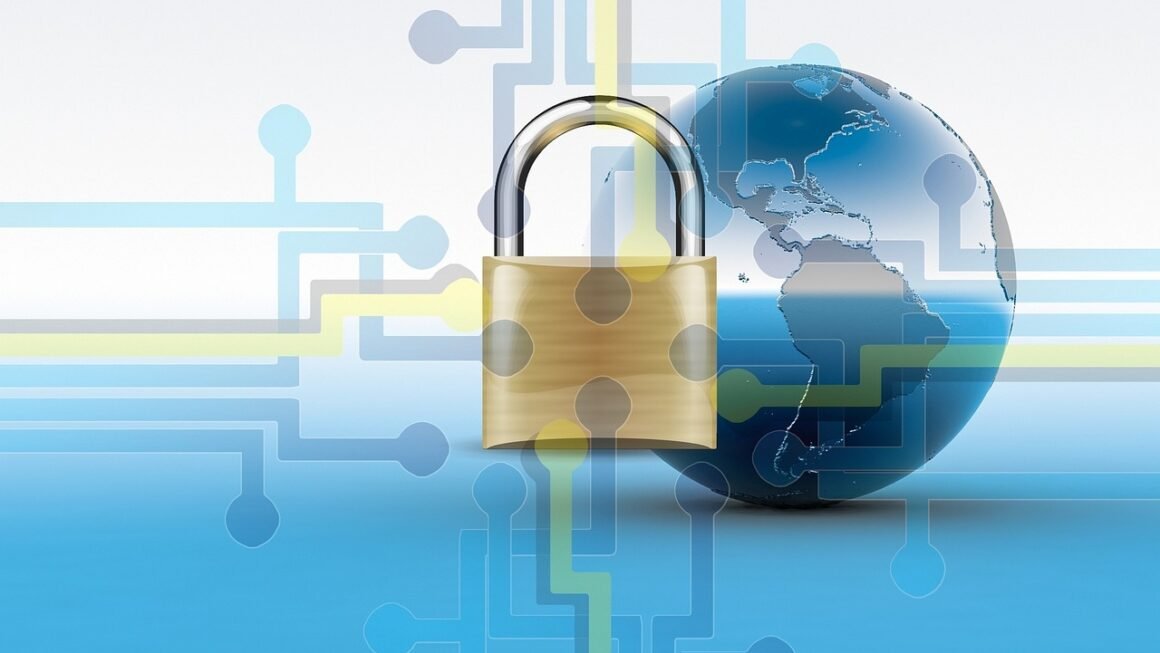The digital world has become inextricably linked to our daily lives, offering unparalleled opportunities for connection, innovation, and efficiency. However, this increased reliance on technology also presents a significant challenge: the ever-growing threat of cyberattacks. Understanding the landscape of cyber threats is crucial for individuals and organizations alike to protect their valuable data and maintain a secure digital environment.
Understanding the Cyber Threat Landscape
What are Cyber Threats?
Cyber threats encompass any malicious activity that aims to disrupt, damage, or gain unauthorized access to computer systems, networks, and digital devices. These threats can manifest in various forms, targeting sensitive information, financial resources, and even critical infrastructure. Cyber threats are constantly evolving, requiring ongoing vigilance and adaptation to stay ahead of attackers.
Common Types of Cyber Threats
The spectrum of cyber threats is broad, but some of the most prevalent include:
- Malware: Malicious software, such as viruses, worms, and trojans, designed to infiltrate and damage computer systems.
Example: A ransomware attack encrypts a company’s critical files, demanding a ransom payment for their release.
- Phishing: Deceptive emails, messages, or websites designed to trick individuals into revealing sensitive information like passwords or credit card details.
Example: An email pretending to be from a bank requesting users to update their account details by clicking a link to a fake website.
- Denial-of-Service (DoS) & Distributed Denial-of-Service (DDoS) Attacks: Overwhelming a system or network with traffic, making it unavailable to legitimate users.
Example: A DDoS attack targeting an e-commerce website, preventing customers from accessing the site and making purchases.
- Man-in-the-Middle (MitM) Attacks: Intercepting communication between two parties, allowing the attacker to eavesdrop, steal data, or manipulate the exchange.
Example: An attacker intercepts communication between a user and a website on an unsecured Wi-Fi network, stealing login credentials.
- SQL Injection: Exploiting vulnerabilities in database-driven applications to gain unauthorized access to sensitive data.
Example: An attacker uses SQL injection to bypass login authentication and access user accounts in a web application.
- Zero-Day Exploits: Taking advantage of previously unknown software vulnerabilities before a patch is available.
Example: Attackers exploit a zero-day vulnerability in a popular operating system to install malware on unsuspecting users’ computers.
The Impact of Cyber Threats
Financial Losses
Cyberattacks can result in significant financial losses for businesses and individuals. These losses can stem from:
- Ransom payments
- Data breach notification costs
- Legal fees
- Reputational damage
- Business interruption
Data point: According to IBM’s 2023 Cost of a Data Breach Report, the global average cost of a data breach reached $4.45 million.
Reputational Damage
A cyberattack can severely damage an organization’s reputation, leading to loss of customer trust and brand value. Customers may be hesitant to do business with a company that has experienced a data breach.
Disruption of Operations
Cyberattacks can disrupt business operations, leading to downtime and lost productivity. For example, a ransomware attack can render critical systems unusable, halting operations until the ransom is paid or the systems are restored.
Data Loss and Theft
Cyberattacks can result in the loss or theft of sensitive data, including customer information, financial records, and intellectual property. This data can be used for identity theft, fraud, or sold on the black market.
Prevention and Mitigation Strategies
Implementing Strong Security Measures
Proactive security measures are essential for preventing and mitigating cyber threats. These measures include:
- Firewalls: Act as a barrier between your network and the outside world, blocking unauthorized access.
- Antivirus Software: Detect and remove malicious software from your systems.
- Intrusion Detection and Prevention Systems (IDPS): Monitor network traffic for suspicious activity and take action to prevent attacks.
- Multi-Factor Authentication (MFA): Requires users to provide multiple forms of identification, making it more difficult for attackers to gain access.
* Example: Using a password and a code sent to your mobile phone to log in to your bank account.
Employee Training and Awareness
Human error is a significant factor in many cyberattacks. Training employees to recognize and avoid phishing scams, social engineering tactics, and other cyber threats is crucial.
- Regular security awareness training
- Simulated phishing exercises
- Clear policies and procedures for handling sensitive data
Regular Software Updates and Patching
Software vulnerabilities are a common target for cyberattacks. Regularly updating software and patching vulnerabilities is essential for maintaining a secure system.
- Enable automatic updates whenever possible
- Prioritize patching critical vulnerabilities
- Monitor security advisories for new vulnerabilities
Data Backup and Recovery
Regularly backing up your data and having a recovery plan in place is crucial for minimizing the impact of a cyberattack. Backups should be stored in a secure location, separate from your primary systems.
- Implement a robust backup schedule
- Test your recovery plan regularly
- Consider using cloud-based backup solutions
Staying Ahead of Evolving Threats
Continuous Monitoring and Threat Intelligence
Cyber threats are constantly evolving, so it’s important to continuously monitor your systems and stay informed about the latest threats. Threat intelligence feeds can provide valuable insights into emerging threats and vulnerabilities.
Incident Response Planning
Having a well-defined incident response plan is crucial for effectively responding to a cyberattack. The plan should outline the steps to take in the event of a breach, including containment, eradication, recovery, and post-incident analysis.
Cybersecurity Audits and Assessments
Regularly conducting cybersecurity audits and assessments can help identify vulnerabilities and weaknesses in your security posture. These assessments can provide valuable insights for improving your security measures.
Conclusion
Cyber threats pose a significant risk to individuals and organizations in today’s digital world. By understanding the types of threats, their potential impact, and the strategies for prevention and mitigation, we can better protect ourselves from these evolving risks. Proactive security measures, employee training, regular software updates, and incident response planning are essential for maintaining a secure digital environment. Staying vigilant and adapting to the changing threat landscape is critical for safeguarding valuable data and maintaining trust in the digital age.



